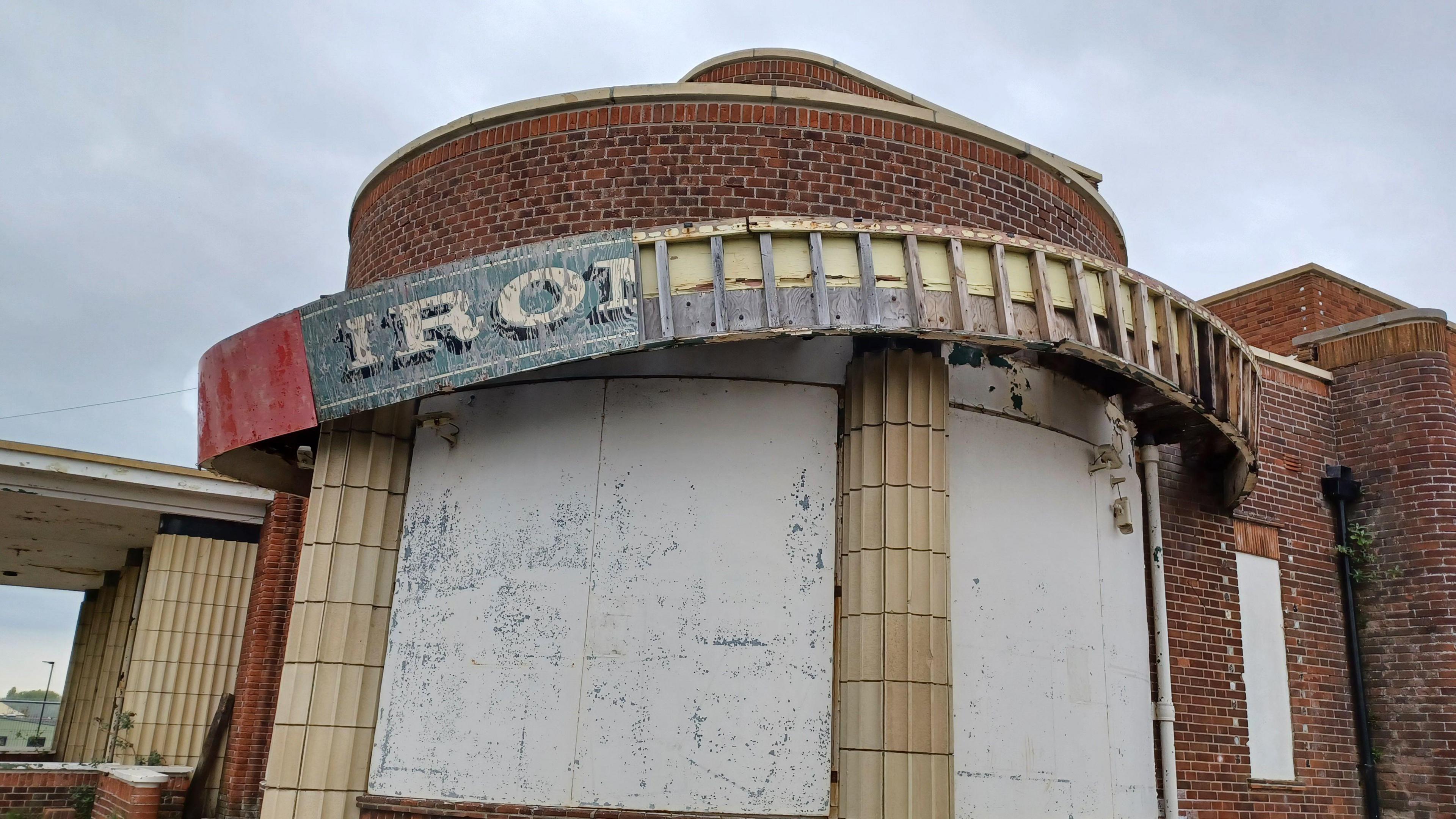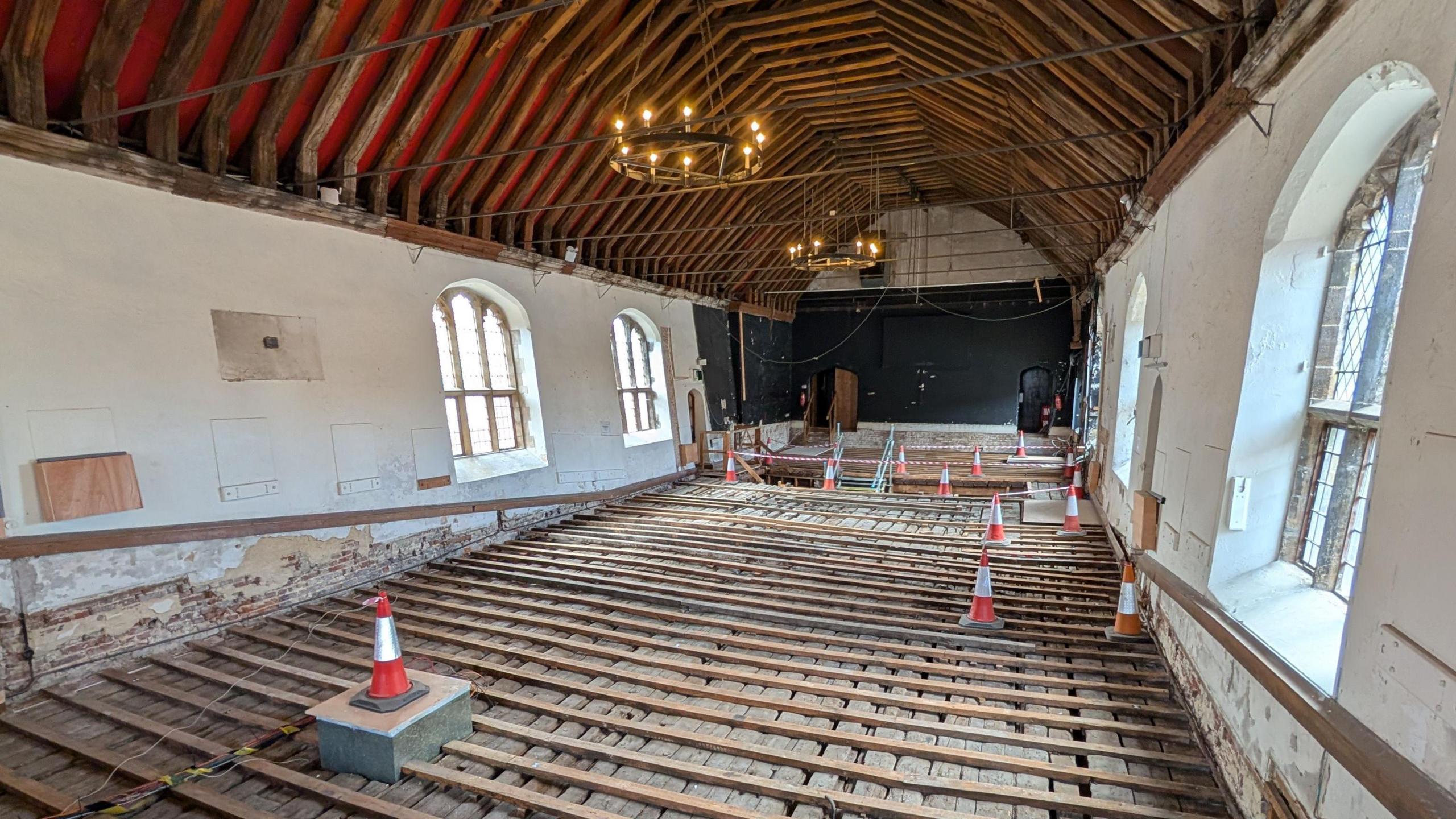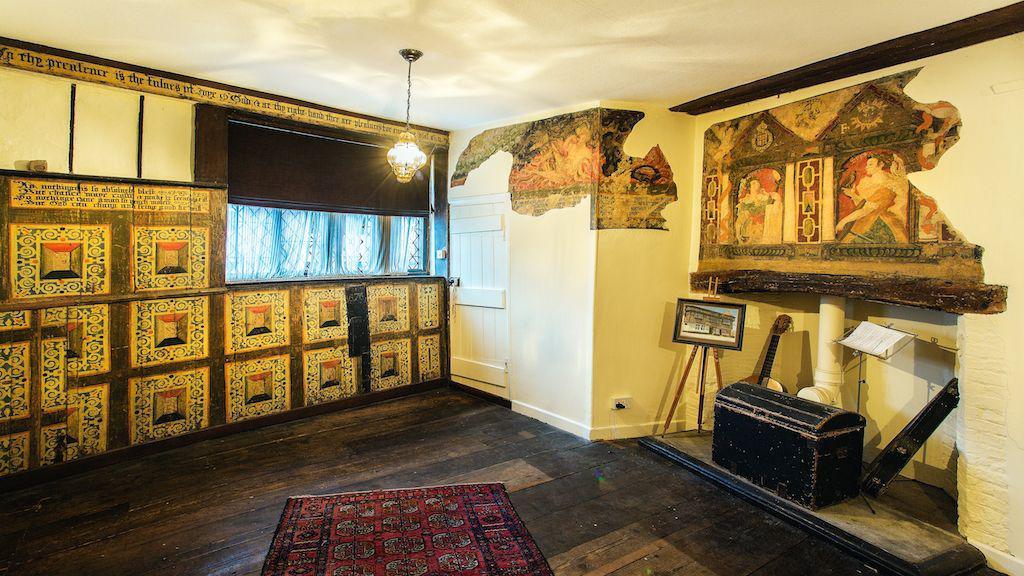Grants 'breathe new life' into heritage buildings

The Iron Duke Public House in Great Yarmouth will be transformed into a community pub
- Published
Six heritage buildings in the East of England are to receive almost £2m in grants for repairs.
They include St George's Guildhall in King's Lynn, Norfolk, Laurel Court in Peterborough and Lowestoft Town Hall, Suffolk.
The fund was intended to prioritise sites that served disadvantaged communities and demonstrated strong local benefits.
Louise Brennan from Historic England said it would help to "breathe new life" into neglected buildings.
A total of £15m will be shared across 37 sites in England through the Heritage at Risk Capital Fund, external, led by Historic England and paid for by the Department for Culture, Media and Sport.
Ms Brennan said Historic England was "thrilled" to support the projects and make a "real difference where it's needed most".
"We are able to breathe new life into neglected historic buildings that we haven't been able to help through our existing grant schemes," she said.
Heritage Minister Baroness Twycross added the grants would help ensure future generations had access to "our rich heritage".
Lowestoft Town Hall

The Grade II listed town hall in Lowestoft dates from 1859 to 1914.
The building has been unoccupied since 2015, when Waveney District Council operations moved to new offices at Riverside, and it has been owned by Lowestoft Town Council since it formed in 2017.
It will receive £707,000 from the fund to help repair the roof, masonry and plaster work.
A £12m scheme was under way to bring the building back into use as a community facility, including a heritage centre, art gallery, cafe, events venue and co-working spaces.
St George's Guildhall and Creative Hub, King's Lynn

The Guildhall of St George in King's Lynn, Norfolk closed earlier this year to allow archaeological work to begin.
It reopened to the public in May and remains open to enable visitors to view the medieval floor that it is believed Shakespeare performed on.
It was established prior to 1376 and work began on St George's Guildhall in the 1390s.
The current building was completed by 1401, with the first Royal Charter in 1406. It was said to be one of the largest complete surviving medieval guildhalls.
The building is operated by the Borough Council of King's Lynn and West Norfolk under lease from the National Trust.

The grant to the guildhall would also ensure that newly rediscovered roof timbers, removed in the 1960s, would be renovated and replaced
The building was awarded £721,330 for roof repairs and infrastructure upgrades, addressing severe damp issues and reinserting missing beams.
Deputy leader of Kings Lynn & West Norfolk Borough Council Simon Ring said: "It is most welcome and a major boost to our internationally significant conservation project."
The Iron Duke Public House, Great Yarmouth

The Grade II listed Iron Duke Public House in Great Yarmouth, Norfolk was built in art deco style in the late 1930s and was completed in 1948.
The pub had stood empty since 2004 but was bought in 2020 by the Great Yarmouth Preservation Trust to bring the building back into public use.
Emergency repairs have taken place to make the building watertight but £136,500 has been awarded to help repair the building's original historic fabric.
It had already been granted £2.4m in lottery funding to help turn around its fortunes.
Laurel Court, Peterborough

The Grade I listed Laurel Court next to Peterborough Cathedral has been awarded £136,653.
It comes as emergency repairs are needed to investigate severe structural deterioration that has left the building empty since April 2024.
The grant repairs would prevent further decay but comprehensive work was needed to complete the full repair of the building and its sustainable adaptation to a new use.
Chapelfield Gardens Bandstand, Norwich

The Bandstand is at Chapelfield Gardens, one of Norwich's most visited parks.
A £315,249 grant will enable the comprehensive restoration of the 126-year-old Victorian timber structure for community music events and performances.
It complements a programme of proposed longer-term wider improvements to Norwich's historic parks, supported by funding from The National Lottery Heritage Fund.
Greenland Fishery House, King's Lynn

The Grade II site was built from 1605 to 1608 and was awarded £99,442 to protect it from further weather damage.
It has urgent structural issues including damp, woodworm damage, unstable roof chimneys and severe draughts that made the building unusable in winter.
Central to the project is restoring the main hall to its original design by removing a 1950s partition wall, revealing 17th Century wall paintings.
Get in touch
Do you have a story suggestion for the East of England?
Follow Peterborough news on BBC Sounds, Facebook, external, Instagram, external and X, external.
Follow Suffolk news on BBC Sounds, Facebook, external, Instagram, external and X, external.
Follow Norfolk news on BBC Sounds, Facebook, external, Instagram, external and X, external.